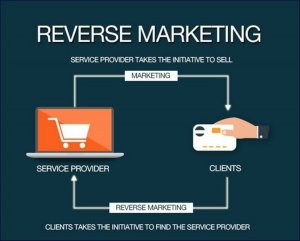Reverse Marketing: An Unexpected but Very Effective PR Strategy

In today’s world full of advertisements and public relations techniques, how do you stand out when it seems like every company is doing the same thing? It can seem almost impossible to stand out or to make a lasting impression on an audience.
In 2017, Patagonia stood out by doing something very unusual. They ran an advertisement in the New York Times informing people NOT to buy their jackets. Understandably, people were very confused because it seems like the exact opposite of what should be done. Most people didn’t realize that Patagonia was using a strategy called reverse marketing.
According to Hitesh Bhasin of Marketing91, reverse marketing is defined as “a concept of marketing in which the customer seeks the firm rather than marketers seeking the customer. In fact, this method is similar to reverse psychology wherein we make another person do or say something by telling them the contrary of what is preferred.”
As shown in the diagram above, typical marketing methods include the service provider working hard to interest clients and sell to them. However, the bottom half of the diagram illustrates the main goal of reverse marketing – to inspire the client to seek out the service provider.
Patagonia used this effectively by then capitalizing on the publicity received and publishing a blog on their website. It explains the ad and calls attention to its Common Threads Initiative and overall values, proving Patagonia walks its talk. This helps build trust with customers and aligns with the target market of people who are looking for companies that share common values.
A small disclaimer: Although this technique has marketing in the title, it actually aligns with a lot of PR principles as it focuses on building relationships and trust with the public.
Why reverse marketing is effective from a company standpoint:
- It makes you memorable. This takes customers by surprise because it’s the opposite of what they expect companies to do. This makes you stand out and they essentially will flag you in their mind as something unique.
- It builds a long-term relationship. Many companies are rather short-sighted, especially on big consumer holidays like Black Friday. They just want to make a sale. However, organizations using reverse marketing are able to build relationships and establish trust. This makes it more likely to gain repeat customers.
Other success stories:
Patagonia is not the only company in recent years to use this strategy. Both Dove and Gillette have also used it successfully with their campaigns, Real Beauty and The Best Men Can Be.
Do you think any company could effectively use reverse marketing or does it take a very specific brand and situation to pay off?
Natalie Batten is a sophomore at Central Michigan University’s Honors College, studying integrative public relations with a minor in finance. She currently serves as the director of digital communications for her PRSSA Chapter. Connect with her on LinkedIn.
